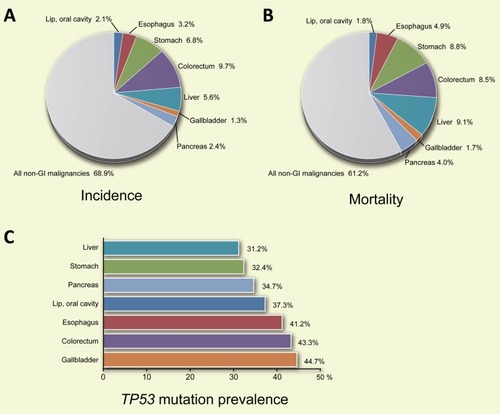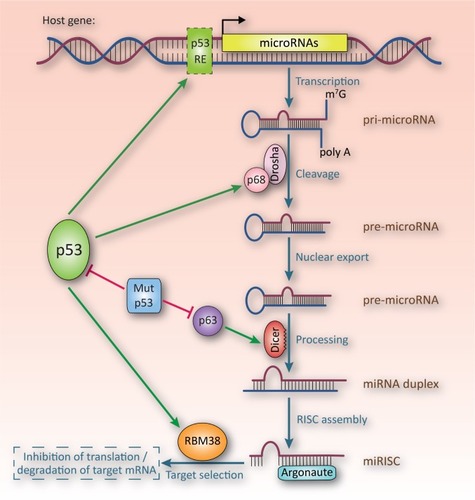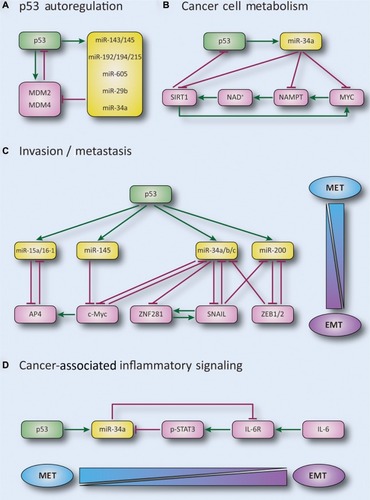Figures & data
Table 1 Summary of changes in expression of p53-pathway-related miRNAs in GI cancers
Table 2 Compilation of p53-regulated miRNAs and their alterations in GI cancers
Table 3 Compilation of miRNAs that directly target p53 and their alterations in GI cancers



